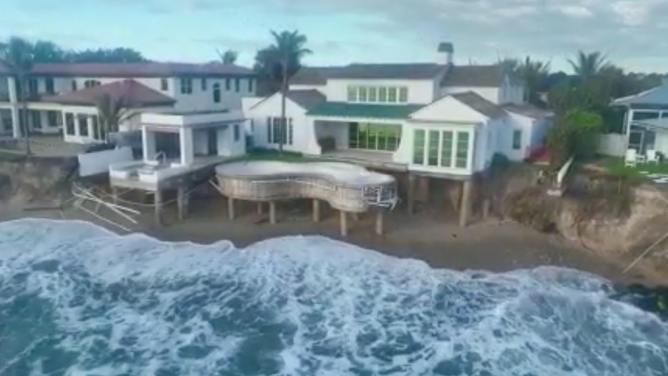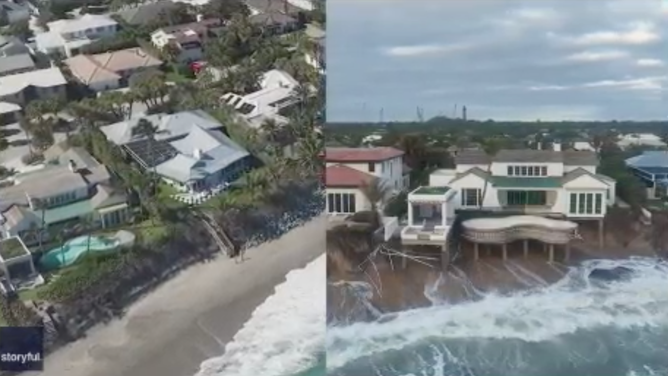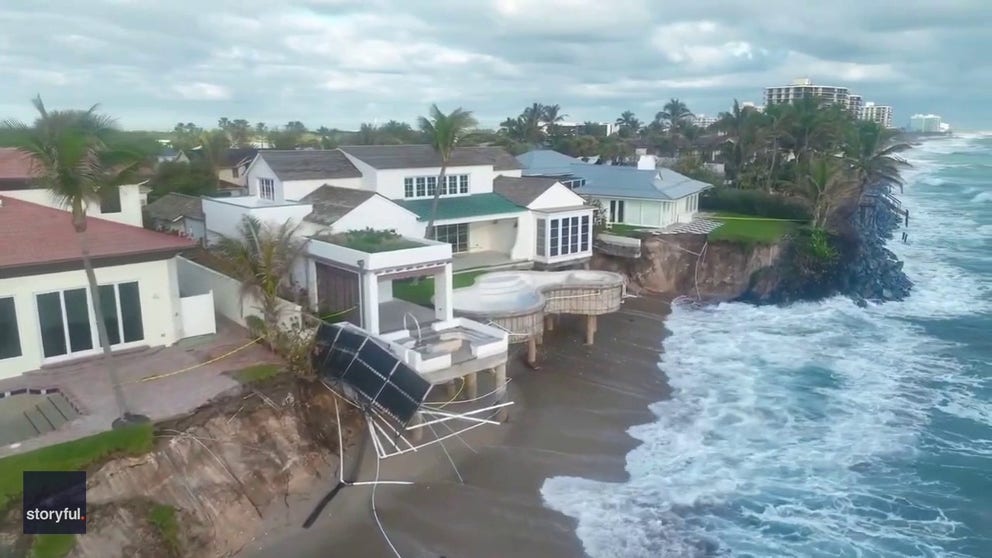Drone video shows massive chunks of South Florida backyards swept into ocean
Palm Beach County includes a 47-mile coastline, with more than 33 miles facing critical erosion. In recent weeks beach erosion has compromised home structures and swept away backyards in Jupiter Inlet Colony.
Aerial video shows damage from beach erosion in Palm Beach County, Florida
Rough surf has led to beach erosion for waterfront homes in Jupiter Inlet Colony. Drone video captured between January 29 and February 10 shows the extent of the damage to homes as the dunes were washed away. (Credit: Stephen Ippolito via Storyful)
JUPITER INLET COLONY, Fla. – For over two weeks, the ground under an oceanfront pool in South Florida was swept away by rough surf, causing beach erosion, aerial video shows.
Drone video captured by photographer Stephen Ippolito shows the extensive beach erosion along the coastline of Jupiter Inlet Colony in Palm Beach County, Florida. The video shows large chunks of dunes, once backyards, washed away by the surf. At the end of the video, photos show before and after what these homes looked like only a few weeks ago.
SARGASSUM SEAWEED 2024 FORECAST: WHEN COULD IT WASH UP ON US BEACHES?
Ippolito said the erosion happened between Jan. 29 and Feb. 10.

Damage to homes from beach erosion in Jupiter Inlet Colony, Florida. (Image: Stephen Ippolito/Storyful)
Palm Beach County includes a 47-mile coastline, with more than 33 miles facing critical erosion, according to the Palm Beach County Environmental Resources Management. The county said development along the coast has compounded the situation, which faces constant wind, waves, tides and hurricanes.

Before and after images show the shoreline after weeks of beach erosion in Jupiter Inlet Colony, Florida. (image: Stephen Ippolito/Storyful)
This fall and winter, rough surf associated with several storm systems moving across the Florida peninsula has swept away even more dunes.
In a Feb. 2 letter, Palm Beach Vice Mayor Maria Marino addressed the increasing erosion.
GROWING THREAT FROM EROSION, STORMS TOO MUCH FOR NORTH CAROLINA OCEANFRONT PROPERTIES TO HANDLE
"Recently, you may have observed shoreline erosion. Our beaches sustained moderate additional damage to a number of previously identified ‘hot spot’ areas of erosion through the end of 2023 as a result of repeated strong frontal storm systems and their associated onshore winds," Marino wrote.
Palm Beach County uses multiple techniques to combat erosion, including dune restoration, support structures, and sand transfer and renourishment.
Across Florida's Treasure Coast, officials, including those in St. Lucie County, are concerned because sea turtle nesting season begins in March, and the turtles rely on dunes for their nests.
